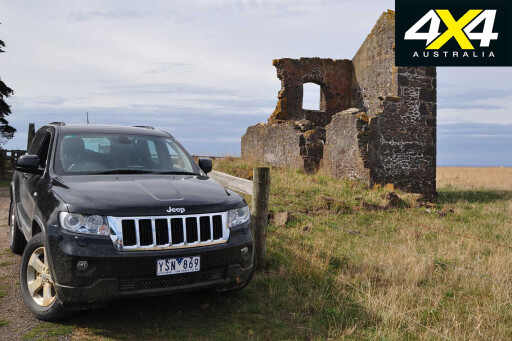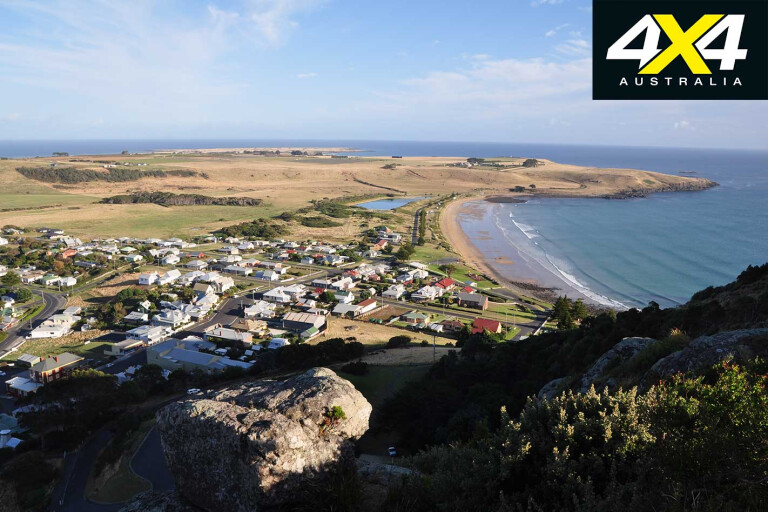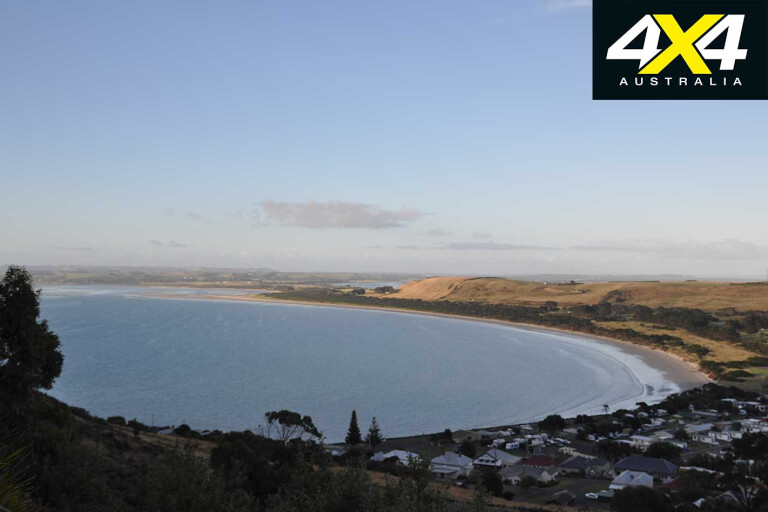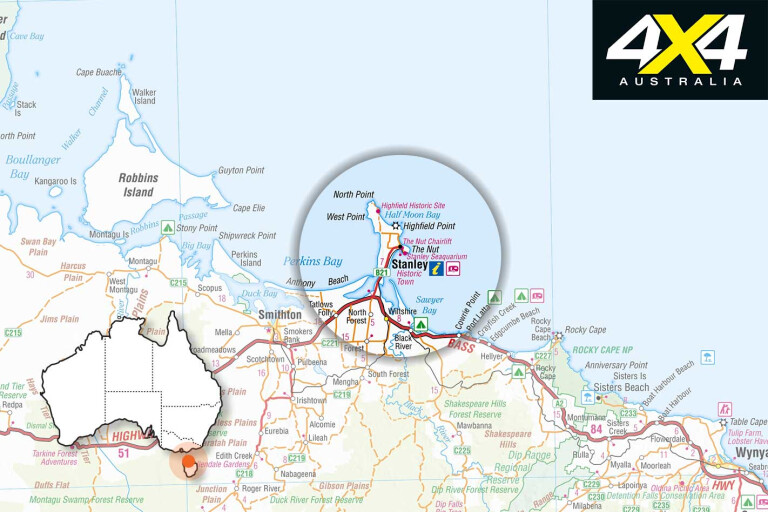
The faint scent of chimney smoke lingered in the morning air and our calves burned from the steep hike. Ahead, a group of wallabies loitered unperturbed on the path, waiting until the last moment to hop out of our way into the track-side scrub.
This feature was originally published in 4x4 Australia’s September 2012 issue
After a week of four-wheel driving through Tassie’s gorgeous west coast, we’d emerged from the Western Explorer Highway the previous day and were now en-route to Devonport – one and a half hours east – to board the Spirit of Tasmania.
 Having slept the night at the local caravan park, we’d risen early to miss the heat of the day (Tassie was at the tail-end of a record-breaking heatwave) and climb the steep, zigzag path to the top of The Nut. Breathless and taking in the 360-degree view from the wide, flat summit, we realised the reward was worth every effort.
Having slept the night at the local caravan park, we’d risen early to miss the heat of the day (Tassie was at the tail-end of a record-breaking heatwave) and climb the steep, zigzag path to the top of The Nut. Breathless and taking in the 360-degree view from the wide, flat summit, we realised the reward was worth every effort.
Stanley has a lot to offer the passer-through: charming 19th-century cottages edging up to the expansive, blue waters of Sawyer Bay; the historic Stanley Hotel with the oldest wine cellar on this coast; and the circa-1840 Highfield Historic House. But they all pale in comparison to this impressively ancient rock formation.
Standing 152 metres above sea level and approximately 2km in circumference, Circular Head – more commonly known as The Nut – is a volcanic plug that has stood over the immediate area for an estimated 13 million years, according to the local council.

The origins of its common name are dubious, but are believed to have come from the local Aboriginal people’s name for the rock, Moo-Nut-Re-Ker, from long before The Nut was ‘discovered’ and called Circular Head by Lieutenant Matthew Flinders and Dr George Bass in 1798.
If The Nut is Stanley’s patriarch, then its complementary matriarch comes in the form of Highfield Historic House, which stands on a promontory 3km out of town.
Highfield was home to the Van Diemen’s Land (VDL) Company’s chief agent, Edward Curr, from 1827, when he chose Stanley as the first site of European settlement in Tasmania’s north-west. The grand estate has been fully restored and is open for tours.

The brochure in our cabin described a visit to Highfield as “difficult to describe”… which made me laugh. But ambling through the high-ceilinged corridors over creaky, uneven floorboards; visiting the school chapel and the classroom above it built for Curr’s 15 children; and ducking beneath the low-hanging ceiling of the staircase to the earthen-floor basement is truly an ineffable experience.
The musty air, peeling wall paper and the original barn filled with rusty, retired farm machinery provide an unusually tangible insight into the area’s fascinating – and significant – colonial history. The information signs in each room and in the outbuildings tell the story of the VDL Company and the home’s original inhabitants – including the tragic death of Curr’s two-year-old daughter in an accident on the property, and the suicide of resident surveyor and architect Henry Hellyer.
Today Stanley is home to a permanent population of less than 500; the main industries here are fishing and, increasingly, tourism.

As well as The Nut and Highfield House, fairy penguin tours – which the north coast of Tassie is famous for – are available to book at the Stanley Hotel. Or sit quietly by the water at dusk and you might even spot one free of charge – we had no such luck. Seal cruises are also available, subject to conditions.
Most Tasmanian travel itineraries prioritise places such as Cradle Mountain National Park, Freycinet, Bruny Island and – particularly for four-wheel drivers – the western wilderness. But not to include the quaint seaside town of Stanley would be a sad omission and, nestled as it is at the base of the Nut, it’s rather hard to miss.
Travel Planner

WHEN TO GO
Tasmania’s peak season is in spring and summer (October to March). It can be very cold and wet in winter.
WHAT TO DO
Climb the Nut via a steep zigzag track followed by a flat 2km circuit or take a chairlift ride to the top. Seal-, platypus- and penguin-sighting tours are available from $25 per adult, visit www.stanleytasmania.com.au. Or tour Highfield Historic House. $20 per adult. Visit historic-highfield.com.au.
ACCOMMODATION
The Stanley Cabin & Tourist Park is located on the water and has self-contained cabins, powered and unpowered campsites and full facilities, visit stanleycabinpark.com.au. There are numerous other accommodation options, such as B&Bs and the historic Stanley Hotel. Visit stanleytasmania.com.au for more information.
CONTACT
Contact the Stanley Visitors Information Centre on 1300 138 229 or visit stanley.com.au.

COMMENTS